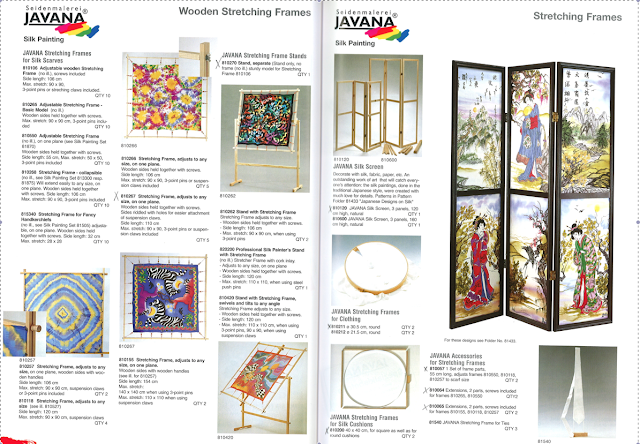 |
| Javana Batik-Frame |
Reasons why the frame must be adjustable (either through the elastic fasteners or in the length of the frame-arms).
- when we paint on the frame, the silk needs to be stretched all the time to achieve even color-result. (you now know "the behavior" of the color pigments from our folding (faux sun technique). The pigment will travel upward and create darker lines es the paint is drying. If the silk hangs through, the paint will collect and build a puddle and unsightly spots.
- the hand-rolled scarves vary in the exact measurements even being labeled as the same size, so you need to be able to accommodate the differences.
- the silk will expand in the painting process and needs to be kept stretched
One level frame vs two level frame:
- both frames allow for adjustment
- the two-level frames are less expensive
- the one level frame sits more firm once you fasten the screws.
- both types can be extended to a larger size (one-level frame requires specific connector, two level frame can be extended using another two-level frame material.
Check the SPIN Facebook page to see what professional silk-painters work with. There is very inspiring information about the Silk Festival.
Two-Level Silk-painting Frame
One-Level Silk-painting Frame
Enjoy your creative journey:)
Happy Wednesday to you.









































